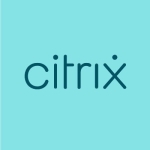What is our primary use case?
We are hosting our mission-critical applications on the Nutanix cluster.
Because of our business needs and application requirements, we have some limitations in terms of migrating our services to the cloud. As a hospital, we need ultra-low latency applications that are very critical for patient care. We need our solution within the same building so that latency requirements can be met. We have a huge amount of data and accessing it is more easily feasible within the data center within our building.
How has it helped my organization?
The main advantage we have now, using Nutanix AHV Virtualization, is that it has helped us reduce downtime. Earlier, we were on a three-tier infrastructure, with separate server, storage, and network. Opting to go with Nutanix SDI over the last two years has resulted in zero downtime. Even if there is maintenance is going on for upgrades, there is zero downtime. DR runbooks and snapshots have both helped us.
In addition, the security features have helped reduce operational challenges. Out-of-the-box, the security of AHV is already hard-coded and hardened. As a customer, I don't have to worry about the security or about adding another layer of security.
It is super easy to manage and doesn't require any specific technical skills to operate. We can provision new infrastructure on-demand with a few clicks. Because of that, it has reduced our IT administration overhead by up to 85 percent. If we compare provisioning network and storage and servers separately with the way that is done in Nutanix, it takes that much less time to provision new servers and resources. That is a big gift.
It has reduced the burden on our administrators. That 85 percent of time is available for an administrator to do other things, rather than providing and monitoring the resources. This is the big takeaway that we have achieved.
And in terms of consolidation, we have placed all of our high-I/O-latency and critical applications on Nutanix SDI. Initially, they were on legacy hardware from different OEMs, like Dell and HPE. Managing those older solutions required multiple skill sets, in Dell and HPE. Now that we have migrated these critical applications to Nutanix, there is no backend. The technology is working in the backend and, as an administrator, I don't have to do a deep dive into the technology. This consolidation was critical and that's why we moved to Nutanix.
We removed a legacy SAN from our environment. Initially, we had separate servers and then the SAN switches. With the SDI consolidation, we don't need any additional SAN boxes or switches to run the applications or servers. We bought our Nutanix solution with enough storage so that we could eliminate the SAN part, and it has helped us with performance as well, because the storage is directly attached to the Nutanix boxes.
What is most valuable?
The hypervisor AHV itself is the most valuable because it is almost invisible, from an administrative point of view. There's nothing to maintain or learn about the hypervisor technology Nutanix has used.
The feature that has had the most impact is data locality. That is a feature that makes Nutanix different from other hypervisors. It helps us to get application performance that is probably double what we got with the legacy, three-tier architecture.
It also supports all platforms, like Microsoft, Linux, and other OVF templates. It is kike other hypervisors in that it is equally capable and enterprise-class. And another very helpful aspect, from a cost point of view, is that it's free.
And when it comes to application visibility and performance, we can see it all in a single window. We get a realistic view of our application performance and security.
What needs improvement?
Nutanix has a Prism Central flavor and a Prism Element flavor. Prism Element is the very basic level. It provides management for Nutanix AHV. If we have to opt for a high level of capacity planning and need more analytics—like deciding on new purchases or budgeting, or if we need additional resources in the near future—we need to pay for Prism Central. I would suggest that Nutanix improve a bit on the analytics part of Prism Element so we can calculate those kinds of things within that flavor.
Buyer's Guide
Nutanix AHV Virtualization
July 2025
Learn what your peers think about Nutanix AHV Virtualization. Get advice and tips from experienced pros sharing their opinions. Updated: July 2025.
864,574 professionals have used our research since 2012.
For how long have I used the solution?
We bought it in December 2019 and it was in production in the first quarter of 2020, so we have been using Nutanix AHV Virtualization for more than two years.
What do I think about the stability of the solution?
It is super stable. I have used ESXi and Microsoft Hyper-V in addition to AHV. I have experience on all three platforms and they are equally stable. AHV is an enterprise-class hypervisor.
What do I think about the scalability of the solution?
The solution is very scalable. We can scale horizontally. If we need memory, we can buy a memory-intensive node and add it to the cluster in the same way we would for compute or storage.
We have around 1,500 users in our organization. All of them use the applications that are hosted on Nutanix.
How are customer service and support?
The technical support is very good. We have a variety of services from different OEMs. What I admire about Nutanix is that they really have very good support. That is one of the greatest things that puts Nutanix ahead of its competitors. It is 24x7 support, and its SLAs are very defined. Their guys are super technical and they take ownership of a case. In fact, as a customer, if I miss something, they will reach out to me. That is something I have not seen with many OEMs.
They also have something called Nutanix Insight. It is an integrated platform. Suppose there is a hard drive failure in our cluster. Their support will automatically know and they will dispatch the part, without even raising a ticket.
How would you rate customer service and support?
Which solution did I use previously and why did I switch?
We had legacy infrastructure, including physical servers, storage, and network switches, from different OEMs: Dell, Cisco, HPE. We removed all of them and opted for Nutanix AHV.
How was the initial setup?
We have two clusters. One is our single-node DR cluster and one is our main, four-node hospital cluster, which is our main site. The clusters are in the same city, about 10 kilometers apart.
The initial deployment was straightforward for us. Nutanix has many partners in India and they aligned us with one of those partners. The partner came to us and assessed our existing infrastructure and then set up our environment by converting our physical infrastructure to the ESXi. From the ESXi, they migrated our servers to Nutanix AHV. There was hardly any downtime during the migration process, and everything went smoothly.
It took around three weeks to complete the deployment. There were two people involved, one from the OEM and me.
The maintenance it requires is super low. It has a feature called LCM (life cycle manager). As an administrator, I just have to just see if an update is available and then click on Update. It automatically updates. Nothing else is required from us. When maintenance has to happen, our applications will automatically migrate to other servers and they'll keep on running. End-users will never notice when maintenance going on. There isn't a single challenge with updating. It is super easy.
Adding compute and storage on-demand is also super easy. If I have to add compute, I just have to buy a node and expand the cluster. That's it. It will auto-discover the node and add it. It is a live procedure, so our existing workload is never impacted.
What was our ROI?
We have seen return on investment because we don't have to pay maintenance costs for the different legacy OEMs that we removed. It has saved us about 45 percent.
In terms of total cost of operations, Nutanix has also helped us a lot because, now, a single administrator can take care of network, server, and storage, because it is a consolidated box. Previously, we needed different guys, one for servers, an expert for storage, and another for network. One person is now doing the job of three people.
Which other solutions did I evaluate?
We assessed many solutions including SimpliVity from HPE, VxRail from Dell, and AHV from Nutanix. We did a comparison and we found that Nutanix AHV fit our budget and our feature requirements.
What other advice do I have?
I definitely recommend it and have done so to many of my peers in the industry. A few of those colleagues were super excited when they got an overview of the product.
Which deployment model are you using for this solution?
On-premises
Disclosure: PeerSpot contacted the reviewer to collect the review and to validate authenticity. The reviewer was referred by the vendor, but the review is not subject to editing or approval by the vendor.





















